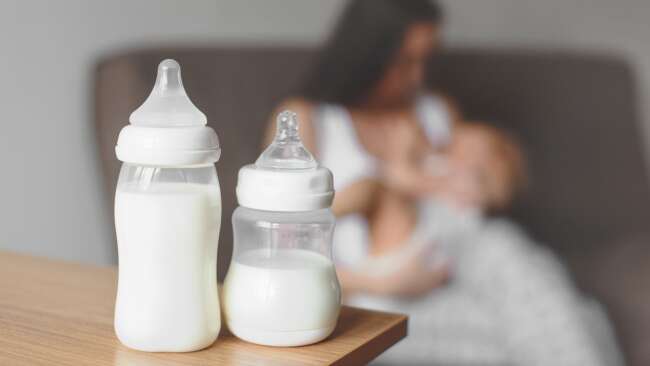Researchers have found significant levels of PFAS, also called ‘forever chemicals’ in 100% of breast milk samples collected in a study.
Per- and Polyfluoroalkyl Substances (PFAS) are manmade chemicals famous for their inability to break down in the environment and within humans. Thus, earning the name of ‘forever chemicals’. They are found in a wide array of everyday products ranging from cosmetics to food packaging. Since they can accumulate in the human body, PFAS are known to cause cancers, liver damage, and birth defects. As a result, regulatory bodies have tried to restrict these substances in products of daily use and push for alternates that don’t build up in the body. However, despite the attempts, it seems the forever chemicals have managed to find their way into the human body. According to the study published in Environmental Science & Technology, researchers found forever chemicals in breast milk samples of US women.
The study shows that PFAS contamination of breast milk is likely universal in the U.S. and that these harmful chemicals are contaminating what should be nature’s perfect food
Erica Schreder, co-author
A team of researchers from Toxic-Free Future, Indiana University, the University of Washington, and Seattle Children’s Research Institute led a study examining breast milk for toxic chemicals. This is the first time in 15 years that researchers analyzed PFAS levels in breast milk. The team collected 50 breast milk samples from mothers in the US.
A Cause for Concern
They analyzed samples for a total of 39 PFAS which included those no longer in use and other newer compounds that are currently in use by industries. All 100 breast milk samples tested positive for the forever chemicals. Moreover, researchers found both current-use and discontinued chemicals in the samples. Thus, providing evidence that the newer PFAS are just as harmful, despite assurances by manufacturers.
Concentration of PFAS levels ranged between 50 parts per trillion (50ppt) to 1,850 ppt. That is almost 2000 times higher than the levels deemed acceptable in drinking water by US agencies. There is currently no threshold for PFAS levels in breast milk.
We shouldn’t be finding any PFAS in breast milk and our findings make it clear that broader phaseouts are needed to protect babies and young children during the most vulnerable stages of life
Erika Schreder, study author
According to Dr. Sheela Sathyanarayana, study co-author PFAS can weaken the immune system. Thus, putting nursing infants at a risk at a critical period of development. Although levels of certain older PFAS appeared to have declined when compared to previous studies, researchers did notice a rise in the levels of newer PFAS.
The most likely source of exposure to PFAS is through water sources or food packaging. Therefore, researchers are petitioning for banning of products containing these harmful chemical and the search for safer alternatives.
Reference:
Zheng, Guomao, et al. “Per- and Polyfluoroalkyl Substances (PFAS) in Breast Milk: Concerning Trends for Current-Use PFAS.” Environmental Science & Technology, 2021, doi:10.1021/acs.est.0c06978.




